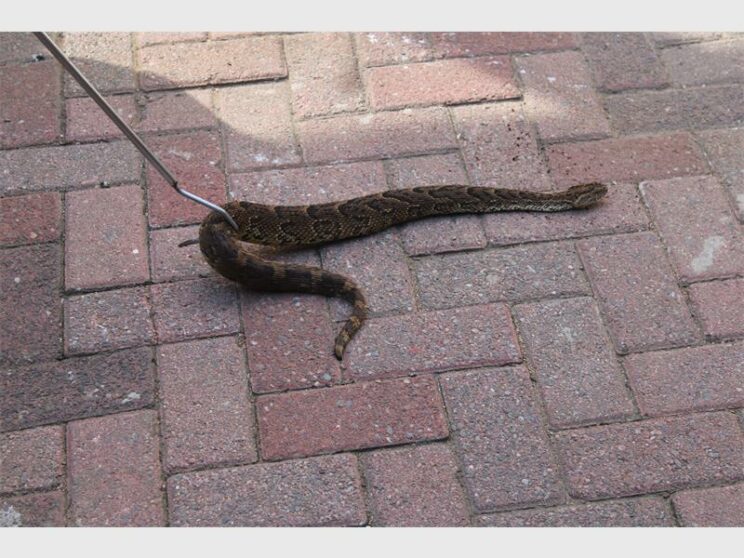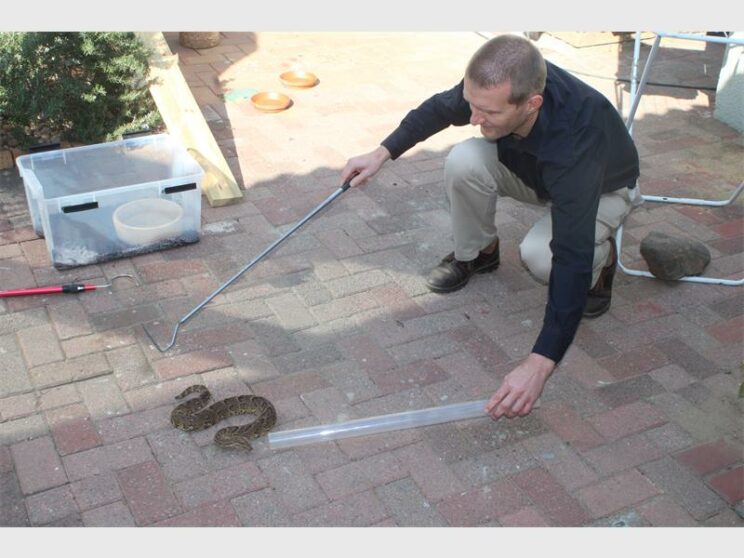NATIONAL NEWS - Secunda, Mpumalanga, BMW technician Brian van der Westhuizen was startled by a puff adder nestled inside the engine protector plate beneath a customer’s vehicle.
The vehicle was brought in for a service on 29 May and placed on a lift for an oil change when Van der Westhuizen made the slithery discovery.
It’s believed the snake hitched a ride from the Kruger National Park, where the vehicle owner had recently visited.
“It was a big surprise. Everyone ran when the snake was spotted,” says BMW manager Danny Hanger.
Fortunately, Hanger had the contact number of local snake handler Thiemo Pösch saved on his phone and immediately called him for assistance.
Speaking to Ridge Times, Pösch says he was surprised by the call, as it’s unusual to find snakes out in winter. However, it’s not uncommon for them to hide in vehicles, which offer warmth and shelter from the cold.
“I was at work when I received the call. I went straight home, collected my snake handling tools and gear, and headed to BMW. They were very happy to see me,” says Pösch.
“From what I could see, the snake had keeled scales. I proceeded cautiously because this species is venomous and can cause serious harm,” he explains.
 The puff adder found in an engine protector plate underneath a vehicle.
The puff adder found in an engine protector plate underneath a vehicle.
According to Pösch, puff adder venom is highly cytotoxic, causing severe tissue damage. Bites are extremely painful and can take a long time to heal.
“As much as people fear snakes, they actually play a vital role in the ecosystem. They help control rodent and frog populations. We don’t kill them,” he says.
A single puff adder can consume up to 20kg of rodents a year, according to Professor Graham Alexander of Wits University, making them valuable to farmers protecting their crops.
Pösch emphasises the importance of maintaining a safe distance from snakes and keeping an eye on them until a handler arrives. In this case, the technician assisted by holding a bucket while Pösch used a hook to safely extract the snake.
“At first, I wasn’t sure if it was a puff adder because its markings were dull. It was cold, so the snake was lethargic and didn’t exhibit typical puff adder behaviour. But by that evening, it was confirmed as a puff adder,” Pösch says.
He explains that puff adders are Africa’s fastest-striking snakes and are extremely dangerous due to their unpredictability.
“A cold reptile becomes sluggish and behaves differently than it would in warmer conditions. A puff adder can strike faster than you can react. They’re very difficult to handle,” he adds.
Pösch says the snake was a male.
To avoid the spread of diseases or the mixing of different genetic populations, the snake will be returned to the Kruger National Park.
Common snakes in the Secunda area include the rinkhals (venomous), red-lipped herald (mildly venomous) and brown house snake (non-venomous).
“We operate strictly on a catch-and-release basis. All indigenous snakes must be released,” says Pösch.
What to do if you encounter a snake
- A snake won’t hunt you, but will defend itself if cornered.
- Fast-moving snakes, like mambas, can outpace a person but typically flee rather than attack.
- Upon seeing a snake, step back to a safe distance outside its striking range.
- Keep pets and children away.
- Rinkhals in the Teks area can spit venom up to 3m with great accuracy. If venom enters the eyes, rinse immediately with water and seek medical attention.
- Keep track of the snake’s movements to help the handler locate it.
- Do not kill the snake. They die slowly, and even a severed head can still bite and inject venom for up to 24 hours.
- Call a local snake handler for safe removal.
- If bitten, seek professional medical care. A photo of the snake will assist doctors in identifying the appropriate treatment.
 Snake handler Thiemo Pösch with the puff adder he rescued.
Snake handler Thiemo Pösch with the puff adder he rescued.
‘We bring you the latest Garden Route, Hessequa, Karoo news’
















